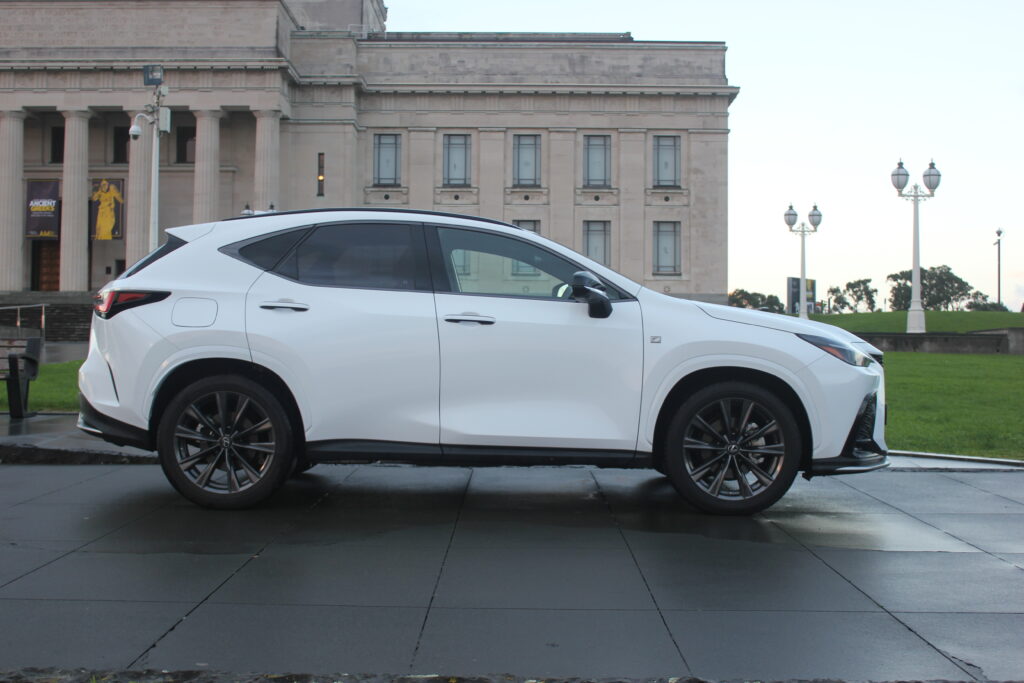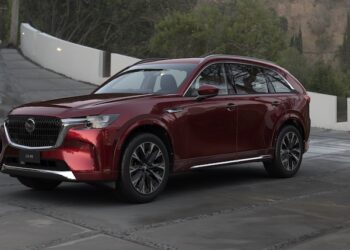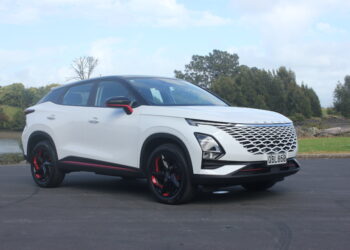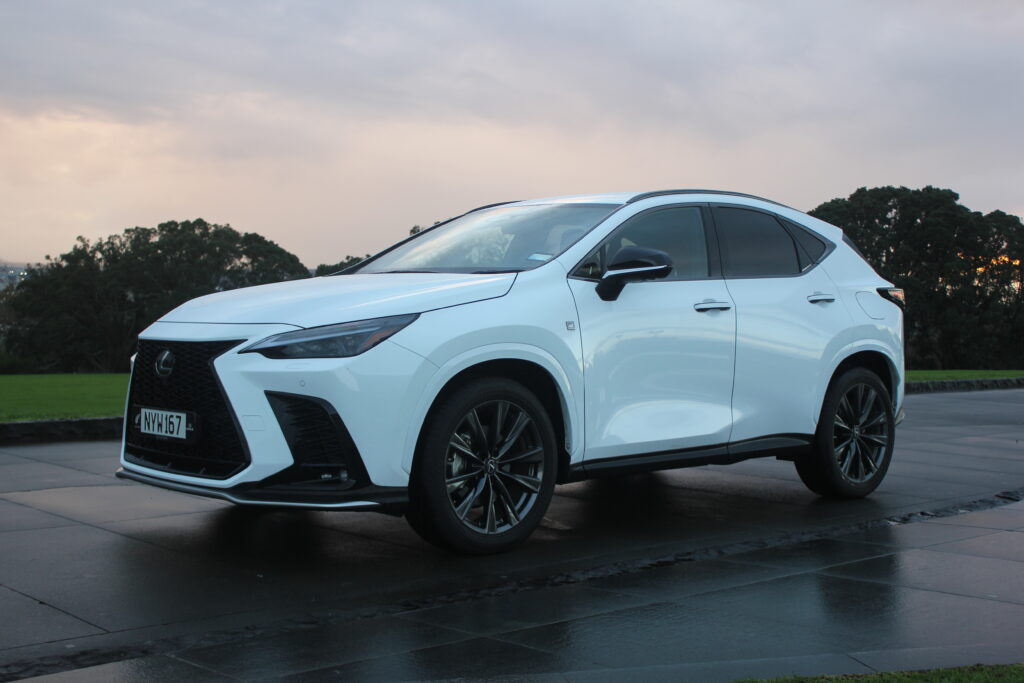
New Zealand’s mid-sized luxury SUV market is hugely competitive which is why Lexus says the all-new 2022 NX was reimagined, redesigned and reengineered from the ground up.
When competing in six figure territory with electrified BMWs, Mercedes-Benzes, and Volvos, a luxury competitor like Lexus must bring its own style and flair to the table.
And the new NX encompasses that and more.
The all-wheel drive 450h+ F Sport is the flagship of the new three-model hybrid-only NX SUV line-up. But most importantly for the environmentally conscious buyer, it also brings plugin hybrid electric vehicle (PHEV) technology to the brand for the first time.
The NX 450h+ PHEV proves that you can have a luxury vehicle that’s environmentally friendly yet is still functional and fun to drive.
THE NUMBERS
The NX 450h+ features a four-cylinder, 2.5-litre engine, a 134kW/270Nm front electric motor, a 40kW/121Nm rear electric motor, and a lithium-ion battery with 18.1 kWh capacity.
The PHEV system, including electric motors and battery, produces a maximum 227kW, enabling acceleration from 0-100 km/h in 6.3 seconds, with weighted combined CO2 emissions of 29 grams/km and fuel economy of 1.3 litres/100km.
The new battery’s performance also enables all-electric driving at speeds up to 100 km/h and beyond through the E-Four electric all-wheel drive system.
Lexus says the NX450h+ is capable of an all -electric driving range of up to 87km, but during our time with the vehicle we found that 67 to 74 was closer to mark, which of course depends on the use of air-conditioning and the amount of brisk acceleration.
OUTSIDE
As much as I respected that the previous generation NX SUV broke the mould for Lexus and introduced the brand to new audience, from a design perspective it just looked a little undercooked, particularly from the rear three quarter view.
However, Lexus has redeemed itself and the new generation NX has a more cohesive design. The traditional spindle grille and angular front headlights are amalgamated with contrasting curves and sharp angles wrapping around the rear body panels into a much sharper and more detailed tailgate with a full horizontal red taillight.
The new NX sits on the new Global Architecture K (GA-K) platform, providing more cabin space and generous cargo capacity of 520 litres which is the largest among its premium competitors.
Compared to the previous generation NX, overall length has increased by 20mm, the wheelbase by 30mm, the width by 2mm and the height by 15 to 25mm.
The GA-K platform allows for wider front (up by 25 to 35mm) and rear tracks (up 45 to 55mm), and accommodates larger wheels and tyres (18- to 20-inch wheels).
INSIDE
The new NX is the first model to feature the brand’s Tazuna concept for the driver’s cockpit, which was revealed in the Lexus LF-30 Electrified concept car.
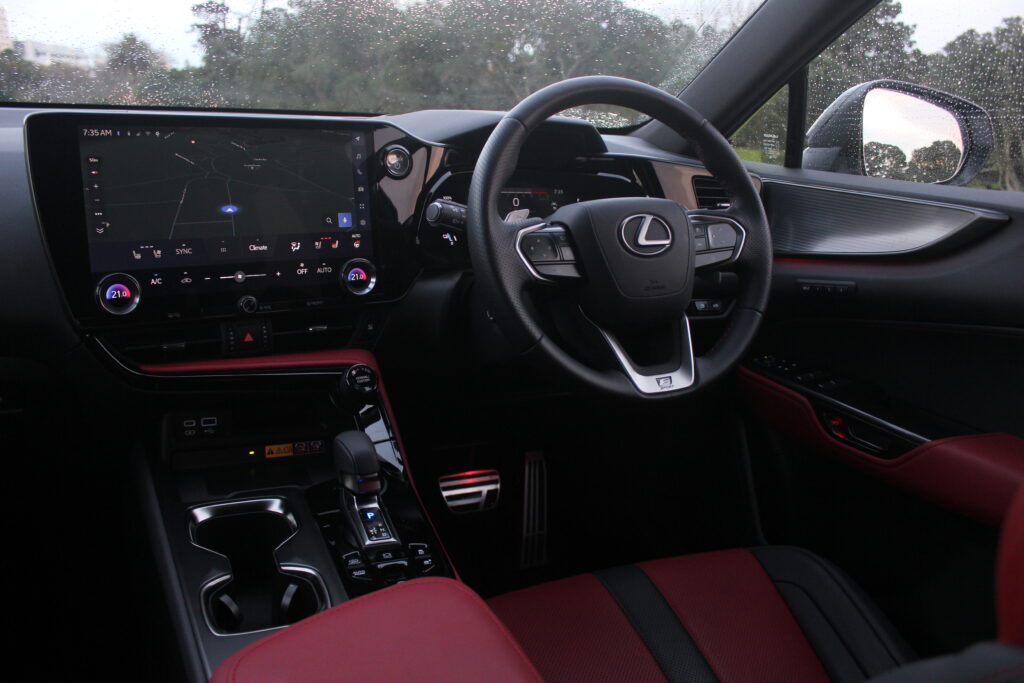
Lexus has ditched its previous infotainment system with a menu scrolling track pad in favour of a new multimedia platform.
It comprises a high-resolution 14- inch touchscreen with the shortcuts to the navigation, media, phone, and vehicle setting functions displayed permanently.
A range of functions can be controlled using the “Hey Lexus” voice recognition feature.
To help keep the driver’s attention focused on the road, the primary sources of information – the multi-information display, multimedia screen, gauges, and meters – are grouped so they can be read at a glance.
The steering wheel has a new design that will be adopted on other new generation Lexuses.
Driver focus is improved by reducing the number of physical switches from 78 to 45 in the new NX. They’ve also been grouped in defined zones according to their function. Physical buttons have been retained for the most frequently used functions.
The Lexus Safety System+ has been upgraded with intersection turn assist in the Pre-Collision System, and lane trace assist in the Dynamic Radar Cruise Control.
The NX has also linked the e-Latch electronic door release with the blindspot monitor to guard against collisions from inadvertent door opening when parked.
THE DRIVE
The beauty of a PHEV like the NX is that most day-to-day running can be achieved on stored battery power which can be topped up overnight using off-peak electricity generation.
Using the auxiliary charger with a three-pin plug connected to a domestic socket will recharge the NX in around 7.5 hours.
As well as the priority EV mode, the NX also offers Auto EV/HV mode which still prioritises electric consumption but is quicker to offer assistance from the petrol engine under heavy acceleration.
HV mode operates the vehicle as hybrid using both petrol and electric energy in tandem, keeping the battery level steady.
When EV mode depletes the battery fully, the NX will revert automatically to HV mode. There’s also a battery save mode which engages the petrol engine, and is useful on long trips or motorway journeys, where the NX can accrue EV range for later use.
Though it might sound a bit complicated, from behind the steering wheel, the transition between the petrol and electrics is smooth and seamless.
Being the top specification F Sport variant, you expect responsive performance, sharp steering feel yet comfortable handling from the 450h+ and it doesn’t disappoint.
It’s a very refined and capable vehicle all round, whether crawling in the urban jungle or during a spirited drive on a winding rural back road.
OUR VIEW
Though hybrid technology has been available in Lexus models for more than 20 years, it has been slower than the German brands to adopt PHEV and battery electric vehicles (BEV).
However, with the recent market arrival of the smaller UX 300e BEV and the future arrival of the RZ SUV BEV, the brand appears to be responding to global sentiment.
The addition of a PHEV to the NX range will broaden its appeal to the luxury SUV market in New Zealand where user-chooser buyers are becoming ever more conscious of their environmental footprint.
